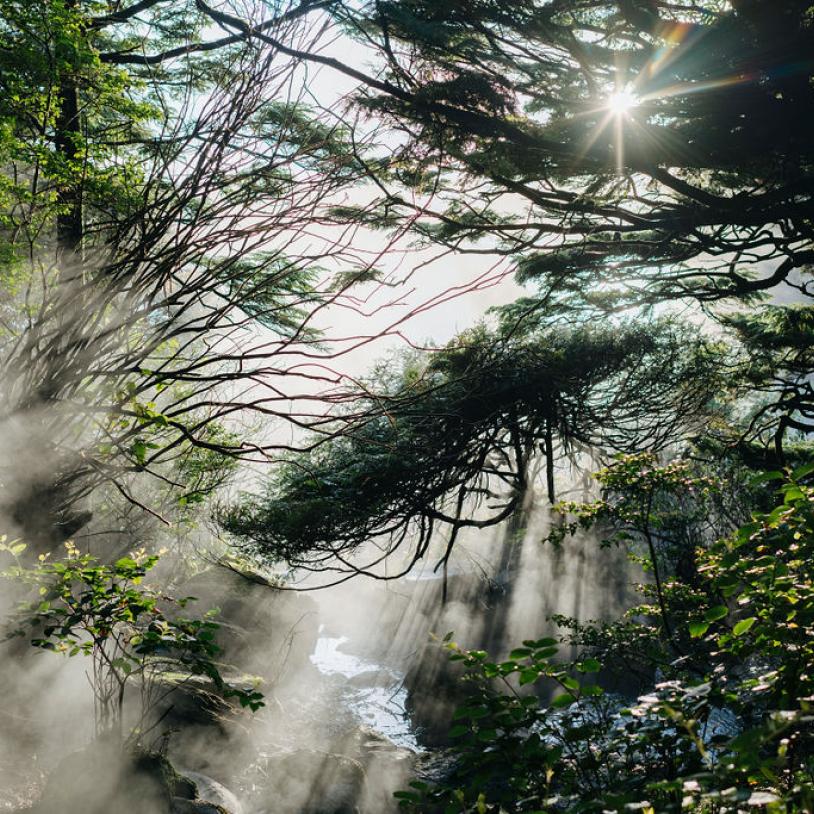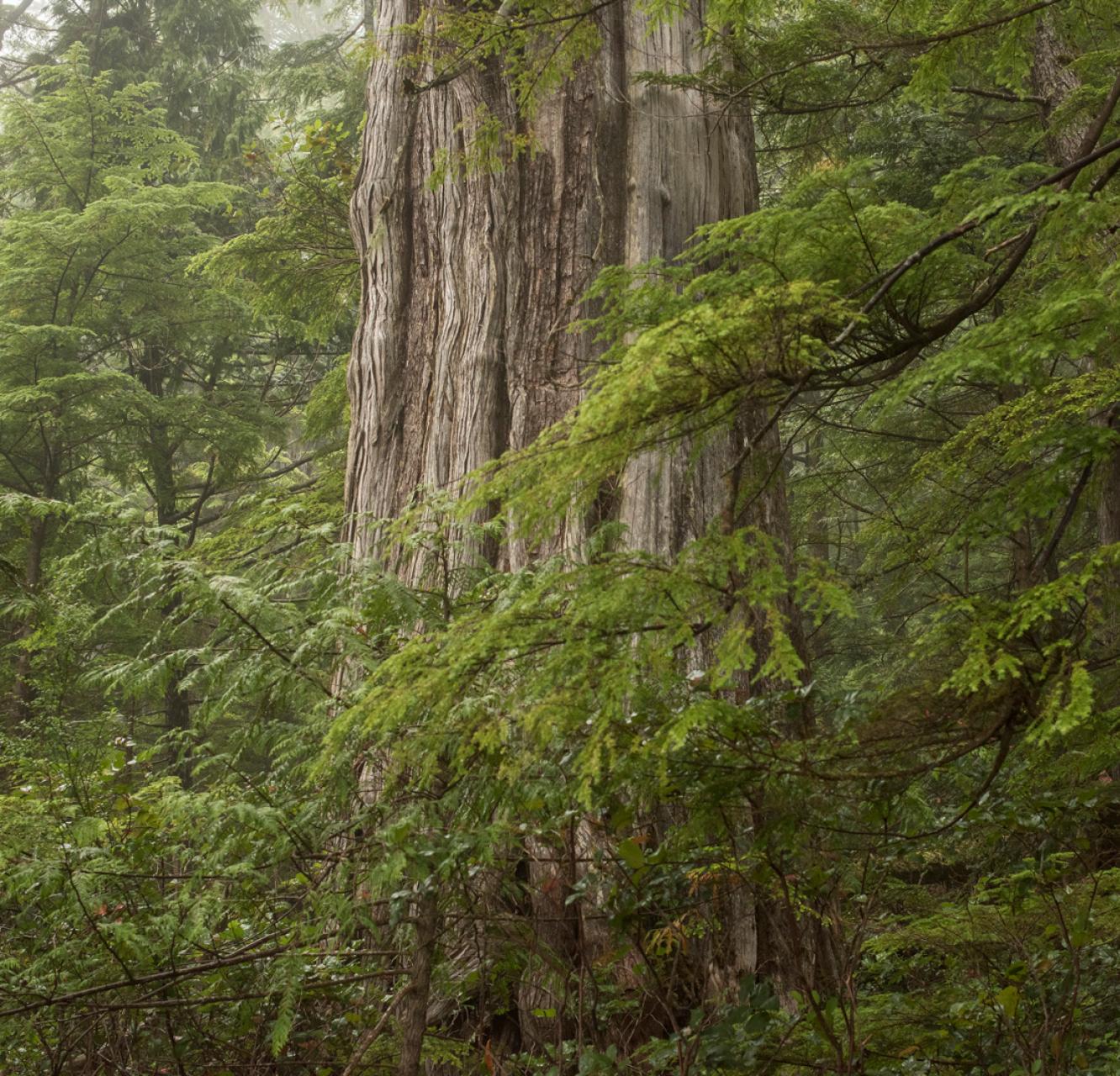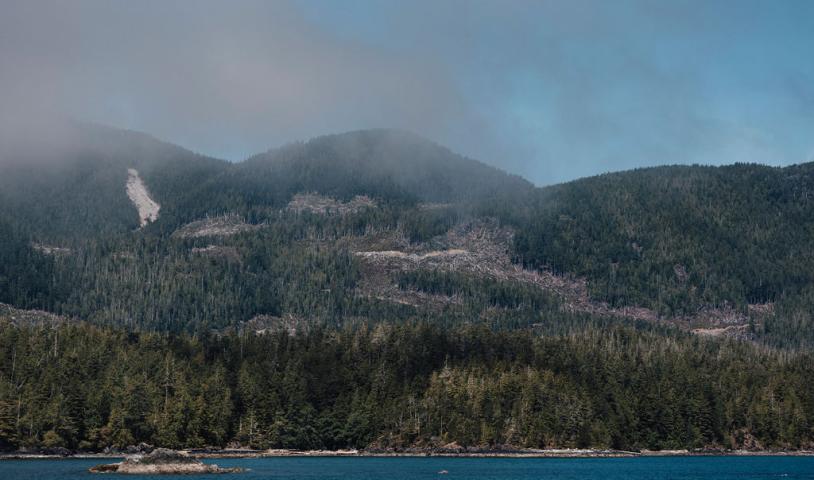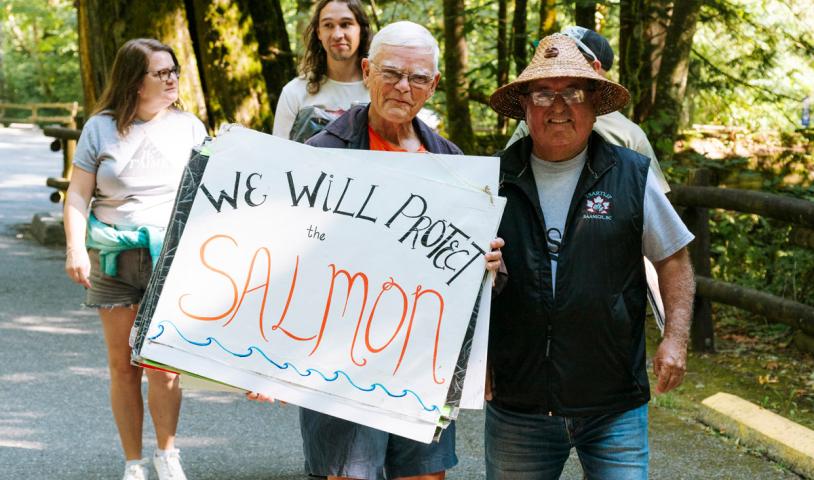On International Day of Forests, groups call on B.C. to halt logging of last intact old‑growth areas
Thursday, March 21, 2019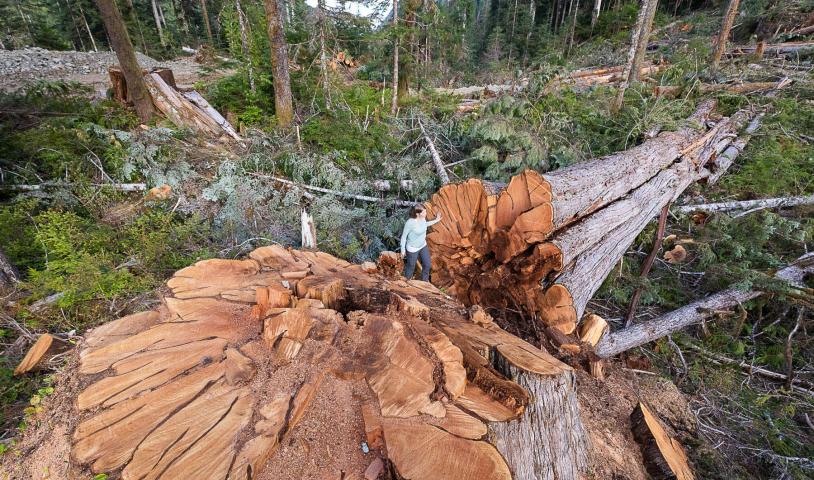
VICTORIA, B.C. – Environmental organizations Ancient Forest Alliance, Sierra Club BC and the Wilderness Committee are calling on the B.C. government to stop issuing logging permits in B.C.’s last remaining intact old-growth forest “hotspots” and endangered old-growth ecosystems and to implement legislation to protect endangered ancient forests. The call coincides with the International Day of Forests (March 21), declared by the United Nations as a day on which to celebrate and raise awareness of the importance of Earth’s forests.
“The B.C. NDP government has stated that they’re working on a strategy to protect endangered old-growth forests and are making changes to forestry laws,” stated Ancient Forest Alliance campaigner Andrea Inness. “While we are looking forward to hearing about details and timelines, we’re extremely concerned that the business-as-usual liquidation of old-growth forests is continuing in the last remaining intact old-growth ‘hotspots’ with the greatest conservation, cultural, and recreational values.”
About two dozen hotspots have already been identified on Vancouver Island. These include the Nahmint Valley in Hupacasath and Tseshaht territories near Port Alberni, where the B.C. government has direct control over BC Timber Sales, the provincial agency responsible for planning and issuing logging permits. The Central Walbran Valley and Edinburgh Mountain in Pacheedaht territory close to Port Renfrew and East Creek rainforest in Quatsino territory on Vancouver Island’s northwest coast are also considered critical hotspots.
“After decades of destruction, ancient forests and the web of life that depends on them are close to the brink,” stated Sierra Club BC senior forest and climate campaigner Jens Wieting. “Business as usual will result in species loss and leave communities with ecologically, culturally, and economically degraded landscapes. We need a halt on logging in critical areas to allow options for land use planning and time to strengthen regulation before it’s too late.”
Recent research mapping by the Wilderness Committee revealed that, in just five months, the B.C. government approved 314 new logging cutblocks with a total area of 16,000 hectares in critical southern mountain caribou habitat in B.C.’s Interior. This is despite the Province simultaneously working on a conservation plan to protect the highly threatened species.
“A ‘talk-and-log’ scenario is unacceptable given the ecological emergency we’re currently facing in B.C. The B.C. government must stop issuing logging permits in critical old-growth areas before more species fall through the cracks,” said Wilderness Committee campaigner Torrance Coste. “The NDP government needs to quit dragging their heels and show they’re serious about mountain caribou and endangered old-growth forest protection. They need to come up with both immediate and long-term solutions while there are still intact ancient forests left to protect.”
Old-growth forests are integral for their cultural values for many Indigenous Nations, as habitat for endangered species, and for climate stability, tourism, clean water and wild salmon. B.C.’s temperate rainforests represent the largest remaining tracts of a globally rare ecosystem covering just half a per cent of the planet’s landmass. Outside the Great Bear Rainforest, the vast majority of provincial old-growth forests have been reduced to small percentages of their original extent. Logging continues with little legal safeguards to ensure a minimum protection based on science. Yet the current rate of old-growth logging on Vancouver Island alone is more than three square metres per second or about thirty-four soccer fields per day.
The environmental organizations are calling on the B.C. government to implement a science-based plan to protect endangered old-growth forests, in line with the NDP’s 2017 election platform commitment to take “an evidence-based scientific approach and use the ecosystem-based management of the Great Bear Rainforest as a model,” support Indigenous Nations’ sustainable economic development and land use plans, and ensure long-term forestry jobs in improved second-growth forest management and value-added manufacturing.
-30-
PHOTOS: https://cp.sync.com/dl/666a597d0/tn8yt9q7-8p9wddx4-bb87y4ca-sufc4vk9
Captions for photos are below. Media are free to reprint images. Credit to “TJ Watt” when possible.
1) Ancient Forest Alliance campaigner & photographer TJ Watt stands next to a giant redcedar tree in Eden Grove on Edinburgh Mountain near Port Renfrew.
2) Ancient Forest Alliance campaigner & photographer TJ Watt stands on top of a giant redcedar stump in a clearcut on Edinburgh Mountain near Port Renfrew.
3) Ancient Forest Alliance campaigner & photographer TJ Watt sits on top of a giant redcedar stump on Edinburgh Mountain near Port Renfrew.
4) Ancient Forest Alliance campaigner & photographer TJ Watt holds falling boundary tape in the Central Walbran Valley old-growth hotspot.
5) Ancient Forest Alliance campaigner Andrea Inness sits next to an unprotected 14-foot-wide redcedar tree in the Nahmint Valley near Port Alberni.
6) Ancient Forest Alliance campaigner Andrea Inness stands beside a freshly fallen old-growth redcedar tree in BC Timber Sales cutblock in the Nahmint Valley near Port Alberni.
7) An aerial photo of old-growth logging in the East Creek Rainforest on the northwest coast of Vancouver Island.
VIDEO: Media are free to use.
1) B-roll footage from Edinburgh Mt. old-growth hotspot: https://cp.sync.com/dl/09755ae90/zytycxg4-mmfz55ed-bbvjct6i-ru4h5bau
2) B-roll footage from Nahmint Valley old-growth hotspot: https://cp.sync.com/dl/0bfd79e10/nhy4yj5b-ja6r67bd-56ekp6n7-fv8pqr9c
Background information:
For detailed Vancouver Island old-growth mapping and statistics, see:
https://sierraclub.bc.ca/white-rhino-map-shows-vancouver-islands-most-endangered-old-growth-rainforests/
The B.C. government has often stated that “over 55% of Crown old-growth forests on B.C.’s coast are protected,” but fails to mention that the vast majority of coastal old-growth forests that are protected from logging are in the Great Bear Rainforest, not on Vancouver Island, where old-growth forests are highly endangered and old-growth logging continues at a scale of about 10,000 hectares a year.
The government also claims that “on Vancouver Island, over 40% of Crown forests are considered old-growth, with 520,000 hectares that will never be logged.” However, the government hides the fact that the majority of this total area is low-productivity forest (i.e. stunted, marginal forests that grow along the outer coast, in high elevation, or in bogs and are therefore not at risk of being logged).
These numbers also ignore heavily logged forests on private lands, which make up more than a quarter of Vancouver Island and which are largely managed under provincial authority.
Finally, the B.C. government fails to mention how much old-growth has previously been logged on Vancouver Island: almost 80% of the original productive old-growth forest and over 90% of the low elevation, high-productivity stands (e.g. the very rare, monumental old-growth stands currently being logged in the Nahmint Valley and other hotspot areas).
For interviews, contact:
Andrea Inness, Forest Campaigner, Ancient Forest Alliance
Ph: 778-953-5983, Email: andrea@ancientforestalliance.org
Jens Wieting, Senior Forest and Climate Campaigner, Sierra Club BC
Ph: 604–354-5312, Email: jens@sierraclub.bc.ca
Torrance Coste, Vancouver Island Campaigner, Wilderness Committee
Ph: 250-516-9900, Email: torrance@wildernesscommittee.org
